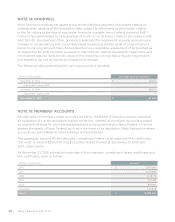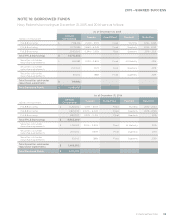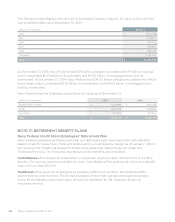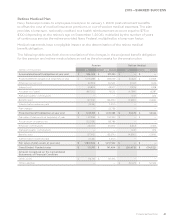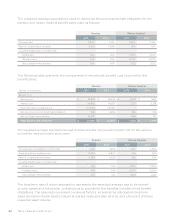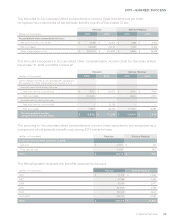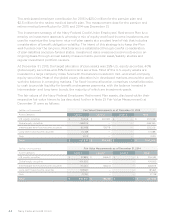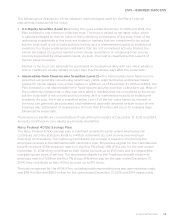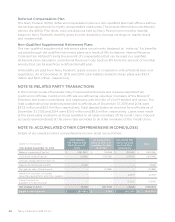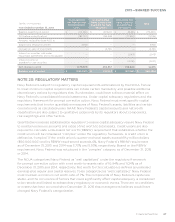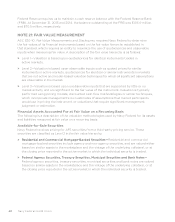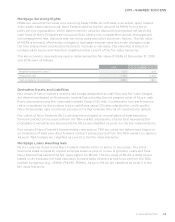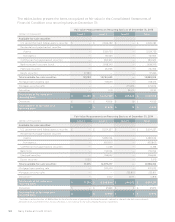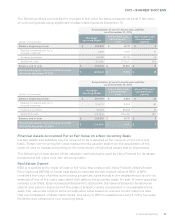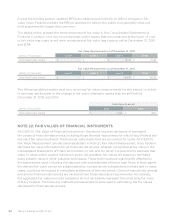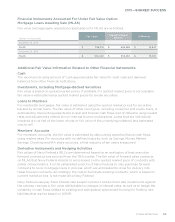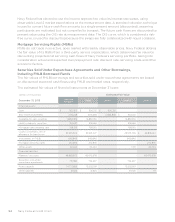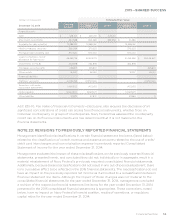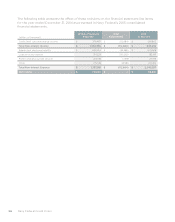Navy Federal Credit Union 2015 Annual Report Download - page 67
Download and view the complete annual report
Please find page 67 of the 2015 Navy Federal Credit Union annual report below. You can navigate through the pages in the report by either clicking on the pages listed below, or by using the keyword search tool below to find specific information within the annual report.Navy Federal Credit Union48
Federal Reserve requires us to maintain a cash reserve balance with the Federal Reserve Bank
(FRB). At December 31, 2015 and 2014, the balance outstanding at the FRB was $106.9 million
and $70.5 million, respectively.
NOTE 21: FAIR VALUE MEASUREMENT
ASC 820-10, Fair Value Measurements and Disclosures, requires Navy Federal to determine
the fair values of its financial instruments based on the fair value hierarchy established in
that standard, which requires an entity to maximize the use of quoted prices and observable
inputs when measuring fair value. A description of the fair value hierarchy is as follows:
> Level 1—Valuation is based upon quoted prices for identical instruments traded in
active markets.
> Level 2—Valuation is based upon observable inputs such as quoted prices for similar
instruments in active markets, quoted prices for identical or similar instruments in markets
that are not active and model-based valuation techniques for which all significant assumptions
are observable in the market.
> Level 3—Valuation is based upon unobservable inputs that are supported by little or no
market activity and are significant to the fair value of the instrument. Valuation is typically
performed using pricing models, discounted cash flow methodologies or similar techniques,
which incorporate management’s own estimates of assumptions that market participants
would use in pricing the instrument, or valuations that require significant management
judgment or estimation.
Financial Assets Accounted For at Fair Value on a Recurring Basis
The following is a description of the valuation methodologies used by Navy Federal for its assets
and liabilities measured at fair value on a recurring basis:
Available-for-Sale Securities
Navy Federal receives pricing for AFS securities from a third-party pricing service. These
securities are classified as Level 2 in the fair value hierarchy.
> Residential and Commercial Mortgage-Backed Securities—Residential and commercial
mortgage-backed securities include agency and non-agency securities, and are valued either
based on similar assets in the marketplace and the vintage of the underlying collateral, or at
the closing price reported in the active market in which the individual security is traded.
> Federal Agency Securities, Treasury Securities, Municipal Securities and Bank Notes—
Federal agency securities, treasury securities, municipal securities and bank notes are valued
based on similar assets in the marketplace and the vintage of the underlying collateral, or at
the closing price reported in the active market in which the individual security is traded.


